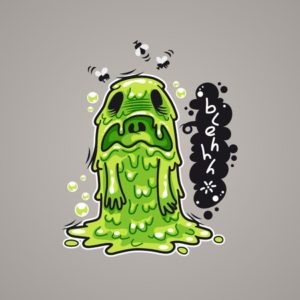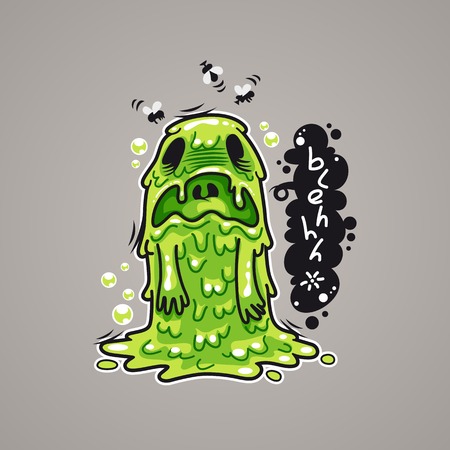
Live Science reported on a study published in the August 31, 2016 issue of The Lancet that found more people are using marijuana and they are using it more often. In 2014, 13.4% of people said they had used marijuana in the previous year, an increase of 3% since 2002. The percentage of people who reported daily or near daily use rose from 1.9% to 3.5%. At the same time concerns about the risks associated with marijuana use dropped. In 2002, 50.4% of adults thought there was a great risk with marijuana use. That fell to 33.3% by 2014. But the perception of lowered risks may be premature.
The authors of the Compton et al. study thought the combination of increased marijuana use and a decreasing perception of the harm suggested there was a need for education regarding the risks of smoking marijuana. One of these health risks is for a medical condition called cannabinoid hyperemesis syndrome, or CHS. It is caused by heavy, long-term use of various forms of marijuana. Its symptoms include cyclic episodes of nausea and vomiting; some people have severe abdominal pain. A CBS Evening News report described a man who struggled with symptoms of CHS for two years before it was correctly diagnosed. Oddly, hot showers or baths seem to provide symptom relief.
CHS was first reported in 2004 by Allen et al. The ten patients were all cyclical vomiters and chronic marijuana users. Nine of the ten also had the abnormal bathing behavior of multiple hot showers or baths. The symptoms of nausea, vomiting and abdominal pain would all settle within minutes of taking a hot bath or shower. Symptoms resolved with abstaining from marijuana use in seven of the ten patients. Three of the abstaining patients resumed marijuana use and relapsed within months.
High Times described CHS as a rare form of cannabinoid toxicity that developed in chronic smokers. The author suggested with CHS, there was generally daily use in excess of three to fives times for several years. CHS is often mistaken for cyclic vomiting syndrome (CVS), because the symptoms are similar. But CVS is not caused by marijuana use. CHS is easily cured by abstaining from cannabis use.
This should not, by any means, hurt marijuana’s reputation for being the safest recreational drug around, but people need to be aware of the syndrome’s existence. If you know anyone with these symptoms tell him or her go to a doctor and stop smoking.
A 2011 review article by Galli et al., “Cannabinoid Hyperemesis Syndrome,” observed how the recognition of CHS coincided with the increased use of cannabis. Their review gave an overview of cannabinoid pharmacology that focused on the properties that seem to contributes to CHS. They also gave a clinical description of CHS and a proposed a method for clinical evaluation, which included differential diagnosis and treatment modalities.
Patients are typically young adults with a long history of cannabis use. They present with recurrent episodes of nausea, vomiting and dehydration with frequent visits to emergency departments. In almost all cases, there was a delay of several years between their chronic marijuana use and the onset of symptoms. One study reported an average duration of 16.3 years of cannabis use before the onset of symptoms. But there have been reports where the time lag was equal to or less than three years.
CHS is a recurrent disorder, with symptom-free periods. There are three phases: pre-emetic, hyperemetic, and recovery. The pre-emetic phase can last for months or years. Patients have early morning nausea, a fear of vomiting and abdominal discomfort. They maintain normal eating patterns and may even increase their marijuana use because its reported relief of nausea.
The hyperemetic phase has spasms of intense and persistent nausea and vomiting, which has been described as “overwhelming and incapacitating.” Patients vomit profusely, often without warning—up to five times per hour. There can be weight loss. Most patients have diffuse, but relatively mild abdominal pain. They are found to be dehydrated, but hemodynamically stable. The tests and work ups done at EDs are inconclusive in the majority of cases.
During this phase, patients take numerous hot showers throughout the day. As this seems to be the only measure that brings some symptom relief, it rapidly becomes a compulsive behavior. The precise mechanism for this relief is not known. It typically lasts for 24 to 48 hours, but the risk of relapse is high if the patient resumes cannabis use.
The recovery phase can last for days, weeks or months. It’s associated with relative wellness and eating patterns. “Weight is regained and bathing returns to regular frequency.”
Patients with CHS usually are misdiagnosed for a considerable length of time. One problem is that it is often confused with cyclic vomiting syndrome (CVS). “Confusion also exists in the medical literature secondary to a failure to recognize chronic marijuana use as a source of vomiting.” Although there is a close similarity of conditions, there are also significant differences.
A 2015 study by Kim et al. looked at the prevalence of patients presenting for cyclic vomiting in Colorado before and after the liberalization of medical marijuana in 2009. A secondary objective was to describe the odds of marijuana use among cyclic vomiting visits during these same time periods. The prevalence of CVS increased from 42 per 113,262 Ed visits to 87 per 125,095 ED visits after marijuana liberalization. Patients with CVS post liberalization were more likely to have documented marijuana use than patients in the pre liberalization period.
The prevalence of cyclic vomiting presentations nearly doubled after the liberalization of medical marijuana. Patients presenting with cyclic vomiting in the postliberalization period were more likely to endorse marijuana use, although it is unclear whether this was secondary to increased marijuana use, more accurate marijuana reporting, or both.
The study said it does not demonstrate causation of CHS. But it does demonstrate a preliminary association “and should serve as the foundation for future prospective studies on the association between marijuana and cyclic vomiting, the eventual establishment of formal diagnostic criteria for CHS.” Foremost among the interventions for symptomatic treatment should be counseling toward abstinence from marijuana use. The authors saw their study as a crucial first step towards establishing a formal diagnosis of cannabinoid hyperemesis syndrome.
High Times seemed to minimize the present concerns with CHS by referring to it as “a very rare syndrome” that is easily cured. CHS does not reverse marijuana’s reputation as “the safest recreational drug around” at this point. But remember that even High Times agreed the cure for CHS is to stop using cannabis. We are just entering into a time of not only increased marijuana use, but also increased daily or near daily marijuana use. As this trend grows into a population of chronic, heavy marijuana users, the safety profile for marijuana will likely change; and it seems that CHS will be part of that decreasing safety profile.





